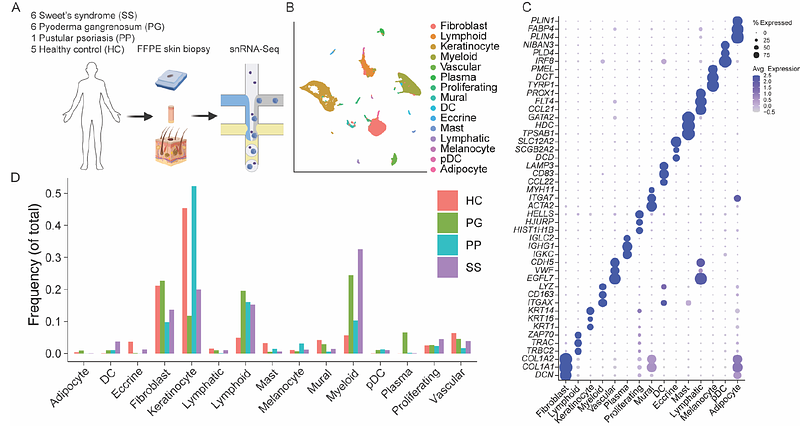Positionally distinct interferon stimulated dermal immune acting fibroblasts promote neutrophil recruitment in Sweet's syndrome

Positionally distinct interferon stimulated dermal immune acting fibroblasts promote neutrophil recruitment in Sweet's syndrome
Cavagnero, K. J.; Albright, J.; Li, F.; Dokoshi, T.; Bogle, R.; Kirma, J.; Kahlenberg, J. M.; Billi, A. C.; Fox, J.; Coon, A.; Dobry, C. J.; Hinds, B.; Tsoi, L. C.; Harms, P. W.; Gudjonsson, J. E.; Gallo, R. L.
AbstractSweet\'s syndrome is a poorly understood inflammatory skin disease characterized by neutrophil infiltration to the dermis. Single-nucleus and bulk transcriptomics of archival clinical samples of Sweet\'s syndrome revealed a prominent interferon signature in Sweet\'s syndrome skin that was reduced in tissue from other neutrophilic dermatoses. This signature was observed in different subsets of cells, including fibroblasts that expressed interferon-induced genes. Functionally, this response was supported by analysis of cultured primary human dermal fibroblasts that were observed to highly express neutrophil chemokines in response to activation by type I interferon. Furthermore, single-molecule resolution spatial transcriptomics of skin in Sweet\'s syndrome identified positionally distinct immune acting fibroblasts that included a CXCL1+ subset proximal to neutrophils and a CXCL12+ subset distal to the neutrophilic infiltrate. This study defines the cellular landscape of neutrophilic dermatoses and suggests dermal immune acting fibroblasts play a role in the pathogenesis of Sweet\'s syndrome through recognition of type I interferons.


